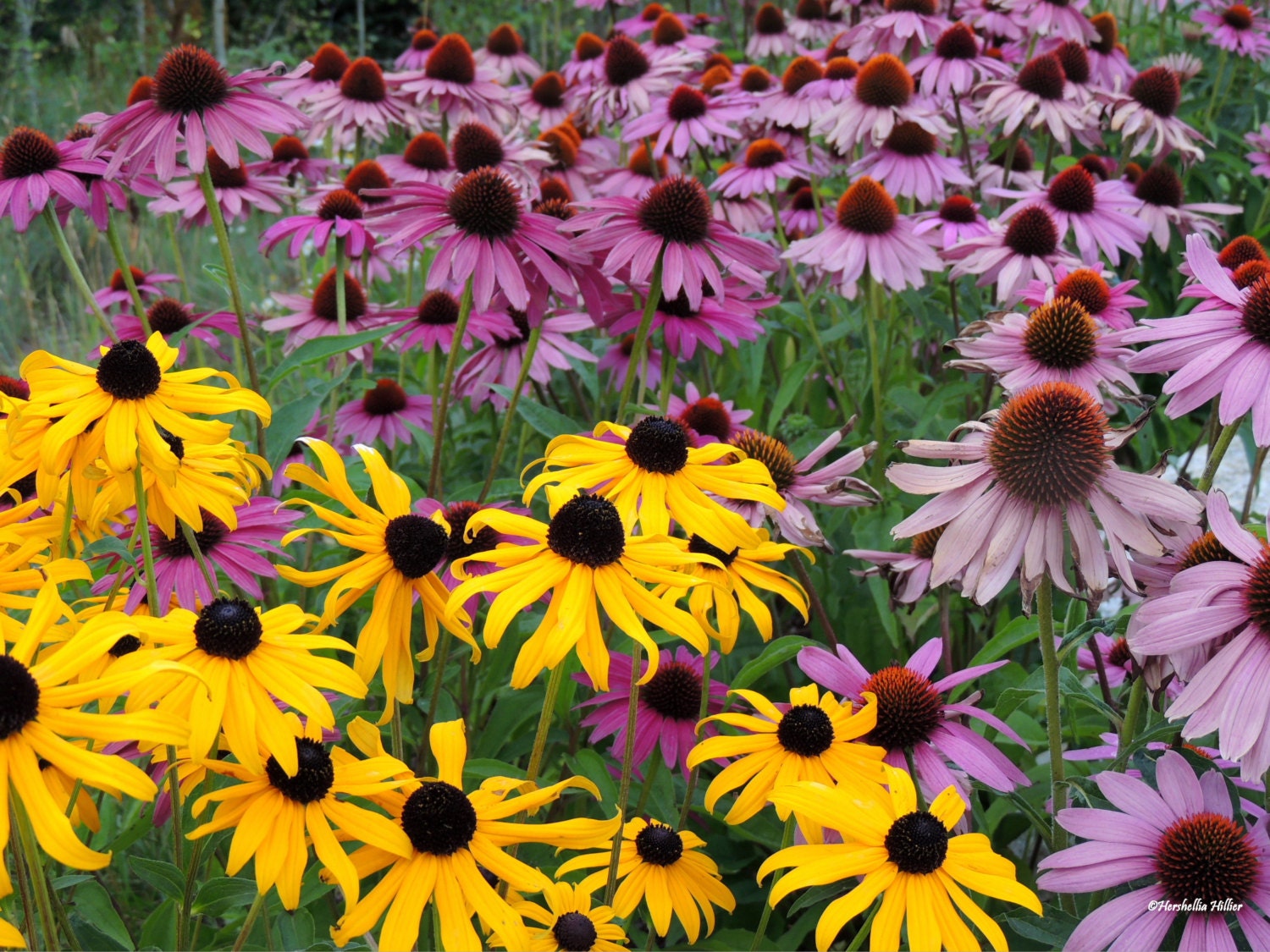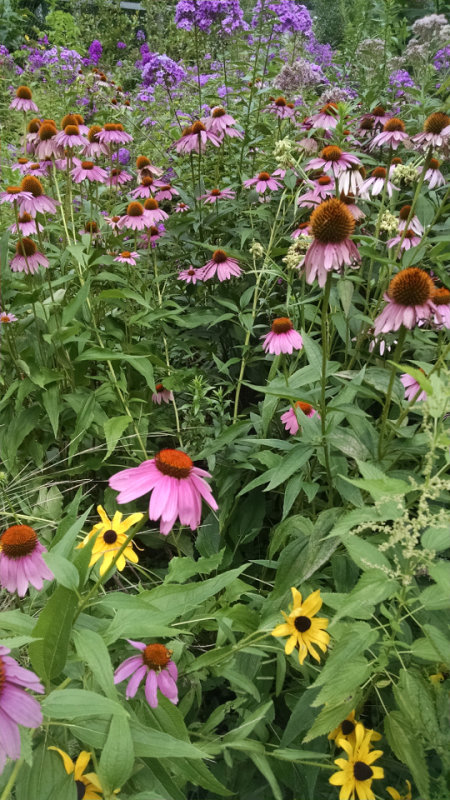

Rudbeckia looks wonderful in gardens, in vases and in open fields. It is named for the Swedish botanist Olaus Rudbeck.
Black eyed susan purple coneflower full#
they thrive in full sun or partial shade in moderately fertile, moist. There are 25 species of Rudbeckia and all are native to North America. Clump-forming, Rudbeckia fulgida is a free-blooming coneflower which grows up to 2-4 ft. It’s a summertime bloomer, and provides flashes of color in a hot weather garden. The plant does very well as a cut flower. The giant variety is also attractive with cosmos, penstemons, tall cannas and as background accent plants. Daisy-like rays of bright yellow petals and dark center disks rise over broad ovate green leaves with a rough texture. Water regularly the first few weeks to establish them and then irregularly afterward.īlack-Eyed Susans look great when planted with purple coneflowers, Russian sage, among vitex and near lilacs. Dependable and easy-care black-eyed Susans ( Rudbeckia hirta) have become a garden staple.

However, all are in the Aster family (Asteraceae), and the purple coneflower is closely related to Rudbeckia.īlack-Eyed Susans thrive on sun, and do well in most soils, are drought-tolerant and forgive neglect.īutterflies, honey bees, beetles and other insects feed on the nectar and pollen of the plant.īlack-Eyed Susans grow well from seed, which germinate in between seven and 30 days, and require little care. While all Black-Eyed Susans are of the genus Rudbeckia, other plants are called ‚”coneflowers”, including purple coneflowers ( Echinacea), Mexican hat ( Ratibida) and clasping coneflower ( Dracopsis). But it shouldn’t be mistaken for other plants also known as coneflowers. Giant Black-Eyed Susans bloom from April through August. Giant Rudbeckia is usually found in warmer zones (7 – 9) but in general, the genus thrives in zones 3 through 9).Īlthough it is a perennial in many areas, the plant can also be an annual or even a biennial. The plant has not been very successful in the southwest. However, other varieties of Black-Eyed Susans have naturalized fields, pastures, meadowlands and roadsides throughout most of North America, including British Columbia and Newfoundland to the north and Florida and south Texas to the south. It ranges as far north as Ontario, south to Texas and Louisiana, and east to Georgia. The centers of the flowers are also gray-green, but turn brown in a few days. Large, alternating, gray-green leaves ladder up a tall stalk, which could rise to six feet. There are times when almost every black-eyed susan in my garden has at least one butterfly on it.Giant Black-Eyed Susans ( Rudbeckia grandiflora), also known as rough or tall coneflowers, stand tall in any garden. Butterflies are especially attracted to black-eyed susans and other coneflowers because the flowers provide a sturdy platform where the butterfly can land. The brown flowers closest to the yellow ray flowers bloom first and the ones in the very center bloom last.Īll coneflowers are important sources of nectar and pollen for many native pollinators. The brown center is made up of lots of individual flowers containing nectar and pollen.

The bright yellow petals are sterile ray flowers whose sole purpose is to attract pollinators. What we think of as an individual black-eyed susan flower is actually a composite of many smaller flowers. In Kentucky, Black-eyed susans bloom from June to September. The coneflowers include popular wildflowers like the black-eyed susans, brown-eyed susans, purple coneflower, grey-headed coneflower, and many others.Ĭoneflowers are semi-drought tolerant and bloom during the summer. The black-eyed susan ( Rudbeckia hirta) is a native wildflower that belongs to a group of flowers called the coneflowers. Photo credit: Shannon Trimboli, all rights reserved The black-eyed susan is a native, summer wildflower.


 0 kommentar(er)
0 kommentar(er)
